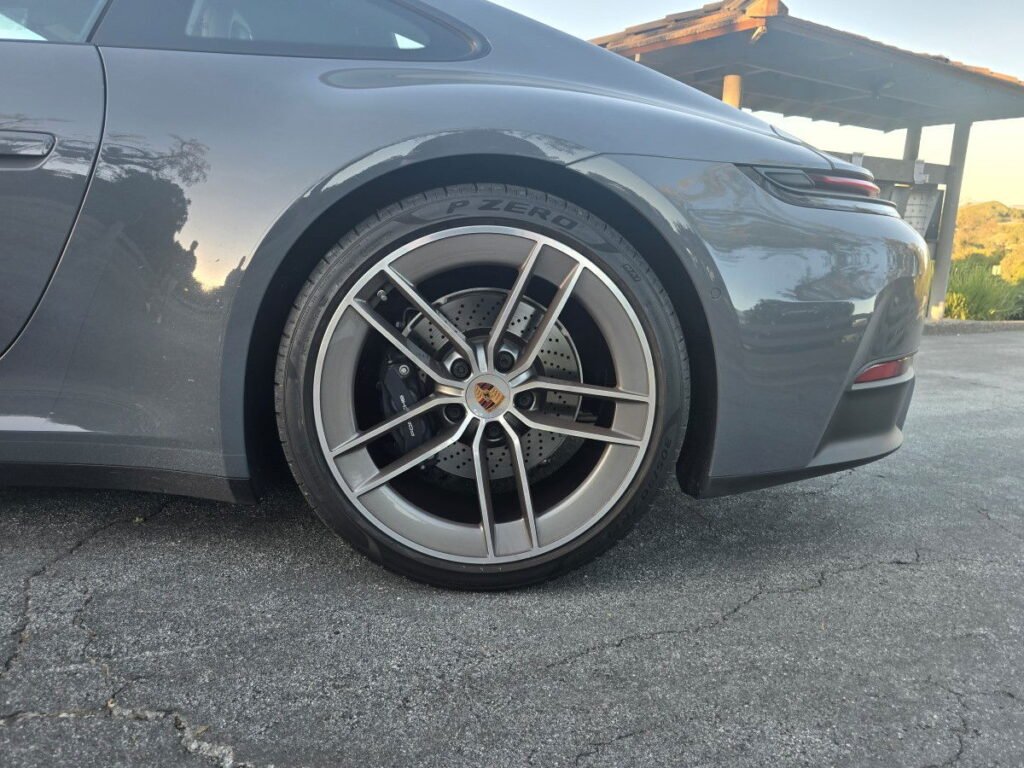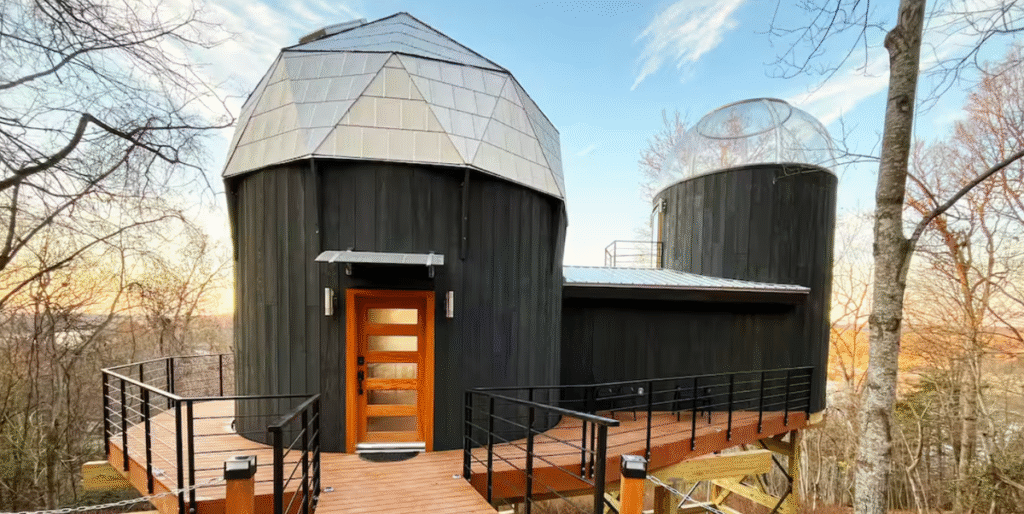Boeing’s Sky Interior offered an evolutionary upgrade for passengers and airlines. It provides incremental improvements to overhead baggage compartments, adjustments around the windows to make them appear larger, better in-seat controls (e.g., to the reading light), and more. Perhaps most notable were LED lighting improvements that enable the airline to shape the mood on the aircraft to mirror nighttime or sunrise during the flight.
For about a decade, the Boeing Sky Interior arguably gave Boeing’s 737 family a more modern feel than its A320 family competition. This changed in 2021 as Airbus introduced its new Airspace interior production standard. The tale of these interiors is part of the larger competition between the two aircraft manufacturing giants, as one introduces an improvement compared with the competition that must then be countered by the other. Here is what to know about the improved Boeing 737 internal cabins.
The Boeing Sky Interior Introduced To Modernize Interiors
In 2011, Boeing delivered its first Next-Generation Boeing 737-800 narrowbody airliner to American Airlines featuring the Boeing Sky Interior (BSI). At the time, Boeing stated the new design marked “a major milestone in American’s commitment to improving and modernizing the customer experience.” Today, the Boeing Sky Interior is standard on all Boeing 737 MAX family aircraft.
This was the same time that Boeing was rolling out its cleansheet Boeing 787 Dreamliner to replace its passenger Boeing 767 family of smaller widebody aircraft. While Boeing 737s (including MAX) do not have the large, automatically dimming windows of the Dreamliner, they were able to incorporate some of the innovative design changes made for the Dreamliner.
One example of where the BSI drew from the 787 was with the larger overhead bins able to hold more bags. The interior offers a range of subtle improvements that many passengers might not notice. For example, it comes with noise-dampening materials applied to the aircraft’s interior skin as well as a new design for the sidewall air grill. These help the cabin to be quieter.
Improvements Offered By Boeing Sky Interior
The Boeing Sky Interior offered larger overhead bins that pivot down and out. This allows the aircraft’s bins to hold 48 more bags than the previous design standard and around four more than the larger bins of the time that were not BSI aircraft. BSI comes with sculpted sidewalls designed to provide customers with “a contemporary feeling of spaciousness and updated window reveals make the windows appear larger.” Passenger overhead switches, and call buttons were modified with more intuitive placements.
The name “Boeing Sky Interior” was likely inspired by the new LED lighting. This is able to be programmed to create different effects during the flight. Airlines can light the cabin with soft blue skylight or other moods, like sunrise/sunset. The overhead speakers were improved, allowing passengers to more easily hear announcements. ![]() American Airlines also fitted its business class seats with universal power plugs so that passengers could charge their electronic devices without adapters.
American Airlines also fitted its business class seats with universal power plugs so that passengers could charge their electronic devices without adapters.
Three years later, in 2014, Aircraft Interiors International reported that a passenger survey conducted by Norwegian Air Shuttle received positive feedback from passengers. It found “more than half of respondents rate the 737 Boeing Sky Interior more comfortable than the standard interior.” It added that passengers reported feeling “happier” in the new interior.
Ryanair Finally Transitioned To BSI In Late 2015
Ryanair was likely one of the last airlines to receive the last non-BSI aircraft. That aircraft (EI-FOB / 9H-QBN) was delivered in November 2015. The first Ryanair aircraft with its BSI interior was delivered in early 2026. Ryanair’s mainline fleet is exclusively made up of the Boeing 737-800 and successor Boeing MAX 8 variant. It operates a special variant of the MAX 8, called the MAX 8-200. These aircraft come with extra exit doors, increasing the aircraft’s certified maximum passenger capacity, so Ryanair can pack more passengers into its flights.
As a new production standard, all low-cost carriers operating Boeing’s 737 will equip their aircraft with the BSI standard. Ultra-low-cost carriers like Ryanair don’t put much emphasis on passenger comfort as their model is to have the cheapest flights.
Separately, Ryanair likes to stir the proverbial pot with controversial announcements, such as that it will start charging a fee to passengers using the onboard lavatory. It has even said it would like to purchase China’s new COMAC C919. While some statements may have substance, they are often used to remind people that they are the lowest-cost carrier in town.
Airbus’s Rival Airspace Cabin
Naturally, nothing happens in a vacuum. Boeing’s new cabin prompted Airbus to develop its own revamped cabin called the Airbus Airspace. This followed the BSI interior becoming first available on long-haul A320neo family aircraft from 2021. Airbus stated, “The new Airspace cabin raises the bar for passenger experience and airline operations alike, with the largest overhead bins and stunning lighting features to name but a few.”
Like Boeing’s new interiors, Airspace introduced customizable LED lighting, more personal space for passengers, a refreshed cabin feel, wider economy seats, new ergonomic sidewalls, and extra-large Airspace XL bins. According to Airbus, these bins can hold up to 60% more luggage. Overall, Airbus claimed the new interior standard brings the level of comfort to its narrowbody aircraft that was previously only available on long-haul aircraft. It was previously developed for its long-haul Airbus A330neo aircraft.
Airbus is continuing to roll out its Airspace. The former Bombardier CSeries, now Airbus A220, is to get Airspace bins in 2026. This will help Airbus to standardize its cabin experience for passengers across its portfolio. The A220 is already acclaimed for its exceptional passenger-focused design and is the newest cleansheet passenger jet available in the European and North American markets.
Interior Cabin Designs, One Of Many Purchase Decisions
Airbus says the key attributes of its Airspace cabin are “Comfort, Ambience, Services & Design.” But passenger comfort is higher or lower on the priority list for airlines, depending on their model (lower for Ryanair). Much higher on any airline’s list of priorities are factors like fleet commonality, fuel burn per seat, range, seat capacity, financing options, relevant discounts, engine reliability, maintenance requirements, and more.
Any competitive advantage Boeing’s Sky Interior had over Airbus’s aircraft was minor and soon overshadowed by the MAX crisis from its 2018 and 2019 crashes. This has resulted in Boeing facing strict oversight from the FAA to improve its quality control, and production limits have been in place, yet its MAX 7 and MAX 10 are still not certified. For decades, the Airbus A320 family has consistently outsold and out-delivered compared with the 737 family. This year, the A320 overtook the 737 as the most delivered commercial aircraft in history, despite the 737 having a two-decade head start.
Still, Boeing MAX sales remain robust, Boeing is making strides in quality control, and many aviation enthusiasts prefer the aircraft over the A320. At the same time, the A320 has had its issues, including problems with the aircraft equipped with Pratt & Whitney PW1000G turbofans. All this is to say that the Boeing Sky Interior provided a modest competitive advantage over the A320 for a time, but Airbus has now closed that gap with its Airspace. Additionally, interior designs are somewhat peripheral to airlines’ purchase decisions anyway.
Which Interior Is Better
Much of a passenger’s cabin experience is not in the hands of the manufacturers, Boeing and Airbus; it is in the hands of the airlines. For example, Ryanair now operates aircraft with these new interiors, ostensibly providing the feel of more personal space, but it contracted Boeing to build a special subvariant so it could cram more passengers in. It’s not just the number of passengers carried. It is airlines that offer incentives to bring baggage into the cabin (e.g., by charging substantial fees for checked baggage) that influence the amount of overhead space passengers have.
Airbus generally prioritizes more physical passenger space, while Boeing’s design philosophy emphasizes perceived spaciousness through features like larger bins and lighting. Airbus fundamentally has more to work with when designing its cabin interiors, as A320 aircraft have an internal cabin width of around 146 inches. This is around seven inches more than the 737’s 139-inch internal width. As a consequence, Boeing 737 seats are generally forced to be a little narrower.
Which interior is better, the Boeing Sky Interior or the Airbus Airspace? Much of the answer to that may come down to personal taste, but they are broadly similar. Airbus’s Airspace and Boeing’s Sky Interior highlight different design philosophies, but both are designed to improve noise levels, lighting, and bin capacity. Each passenger may have their own favorite, though most non-aviation enthusiasts will name their favorite airline rather than the aircraft.








